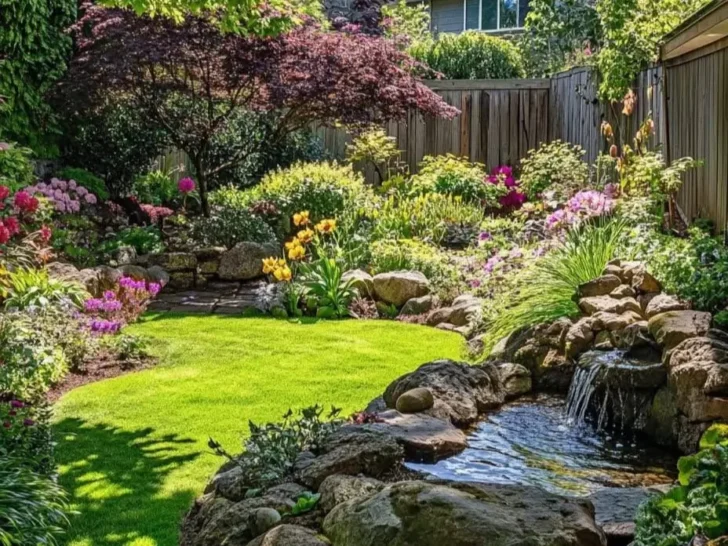A vibrant, flourishing flower garden is more than just a collection of plants; it’s a living tapestry of color, texture, and fragrance. It’s a personal sanctuary, a haven for pollinators, and a constant source of beauty that evolves with the seasons. But transforming a patch of earth into a breathtaking floral display can feel daunting. Where do you begin? What plants thrive together? How do you create a design that’s both visually stunning and easy to maintain?
Fear not, aspiring gardeners! This comprehensive guide is brimming with inspiring flower garden ideas, practical tips, and creative approaches to help you cultivate the garden of your dreams. Whether you have a sprawling backyard, a cozy patio, or just a sunny windowsill, we’ll explore a variety of styles, planting schemes, and design elements to ignite your imagination and get your green thumbs itching to dig in. From romantic cottage gardens to modern minimalist displays, get ready to discover the endless possibilities of flower garden design!
Planning Your Flower Garden Paradise
Before you start digging, take some time to plan your flower garden. Careful planning will save you time, effort, and money in the long run, and ensure your garden thrives.
- Assessing Your Space: Consider the size and shape of your garden area. Do you have a large, open yard, a small, enclosed patio, or a narrow side yard? The available space will influence your plant choices and overall design. Don’t forget to consider microclimates within your garden – a sheltered corner might be perfect for more delicate plants.
- Understanding Your Climate: What is your hardiness zone? How much sun does your garden receive each day? Knowing your climate will help you select plants that are well-suited to your local conditions. Observe your garden’s specific sun exposure patterns throughout the day, as they can differ from general climate data. Some plants thrive in full sun, while others prefer shade.
- Choosing a Style: What kind of aesthetic are you drawn to? Do you prefer a formal, structured garden, a romantic cottage garden, a modern minimalist design, or a wild, naturalistic look? Remember, even within a chosen style, there’s ample room for personal expression and adaptation. Your garden should reflect your unique taste.
- Color Palettes: Think about the colors you want to incorporate into your garden. Do you prefer warm colors (reds, oranges, yellows), cool colors (blues, purples, greens), a monochromatic scheme (different shades of a single color), or a complementary color scheme (colors opposite each other on the color wheel)? For a calming effect, consider a monochromatic palette of blues and purples, using varying shades of lavender, salvia, and veronica.
- Considering Bloom Times: To ensure continuous color throughout the growing season, select plants with different bloom times. Combine spring-blooming bulbs with summer-flowering perennials and fall-blooming annuals for a garden that’s always in bloom. Consider not only the season of bloom but also the duration. Some perennials offer a long bloom period, while others provide a short but spectacular show.
Inspiring Flower Garden Ideas
1/32. Embrace Layered Planting for Depth
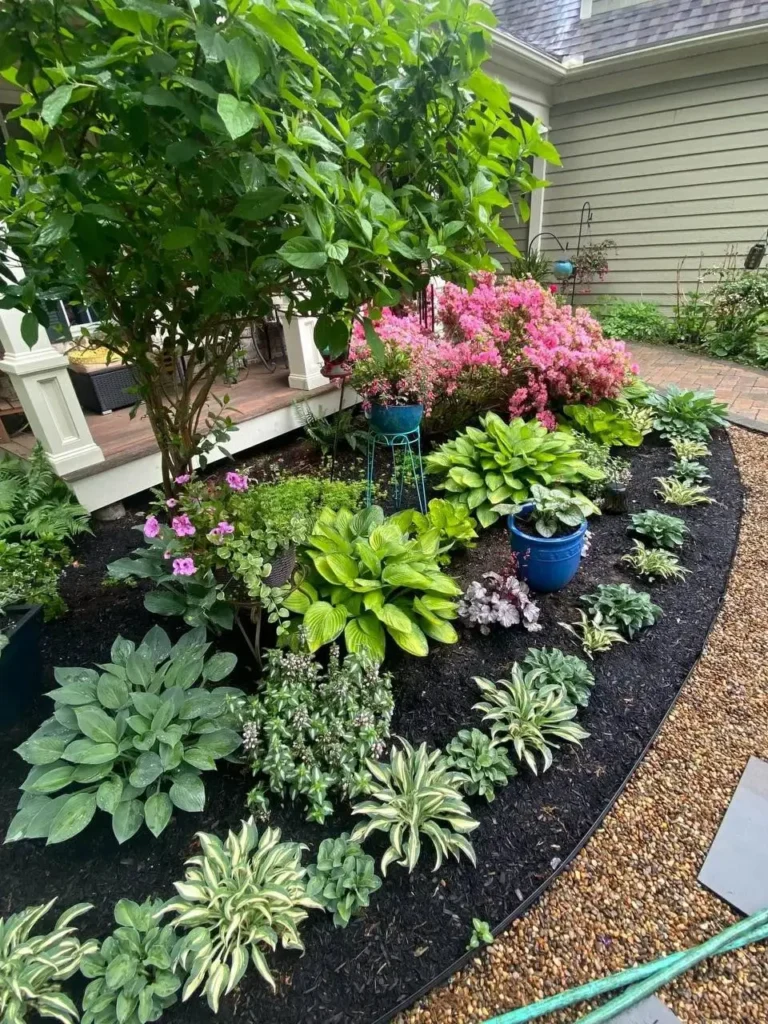
Create a multi-dimensional flower garden with strategically layered plants of varying heights and textures. A dark, rich mulch sets off vibrant greens and colorful blooms, creating visual depth.
2/32. Design a Cozy, Flower-Enclosed Nook
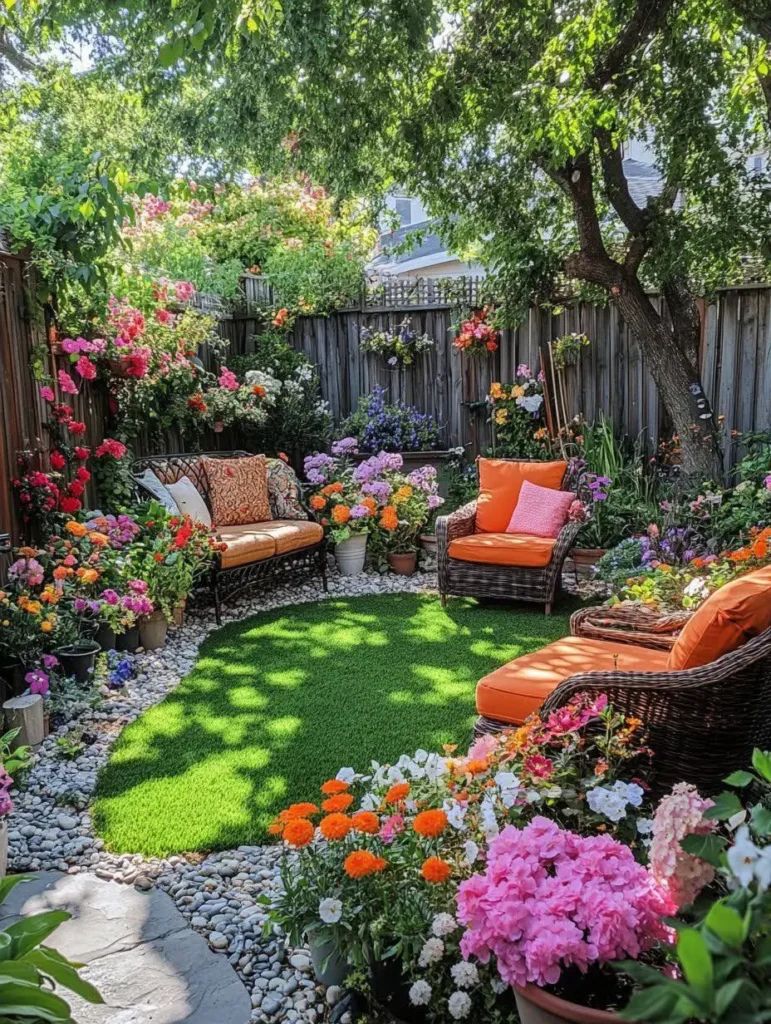
Transform a corner of your yard into a secluded retreat. Surround a comfortable seating area with abundant, colorful blooms for a sense of privacy and immersion in nature.
3/32. Incorporate a Flowering Tree as a Focal Point
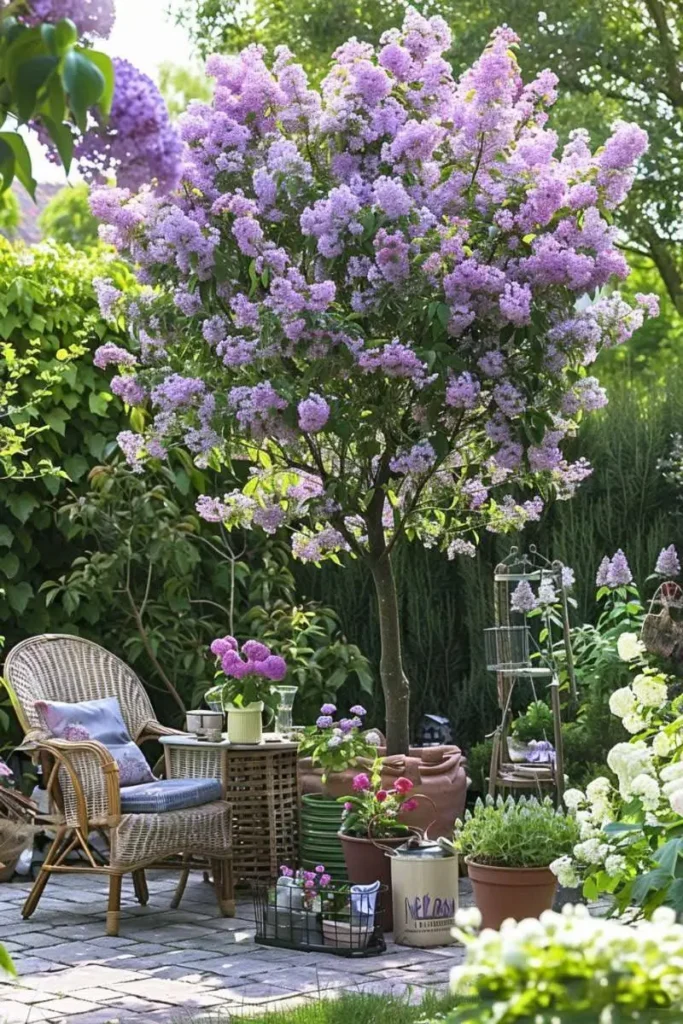
A strategically placed flowering tree, like a lilac, adds height and a dramatic burst of color. Its soft purple hues create a beautiful contrast with surrounding green foliage.
4/32. Striking Specimen Plant
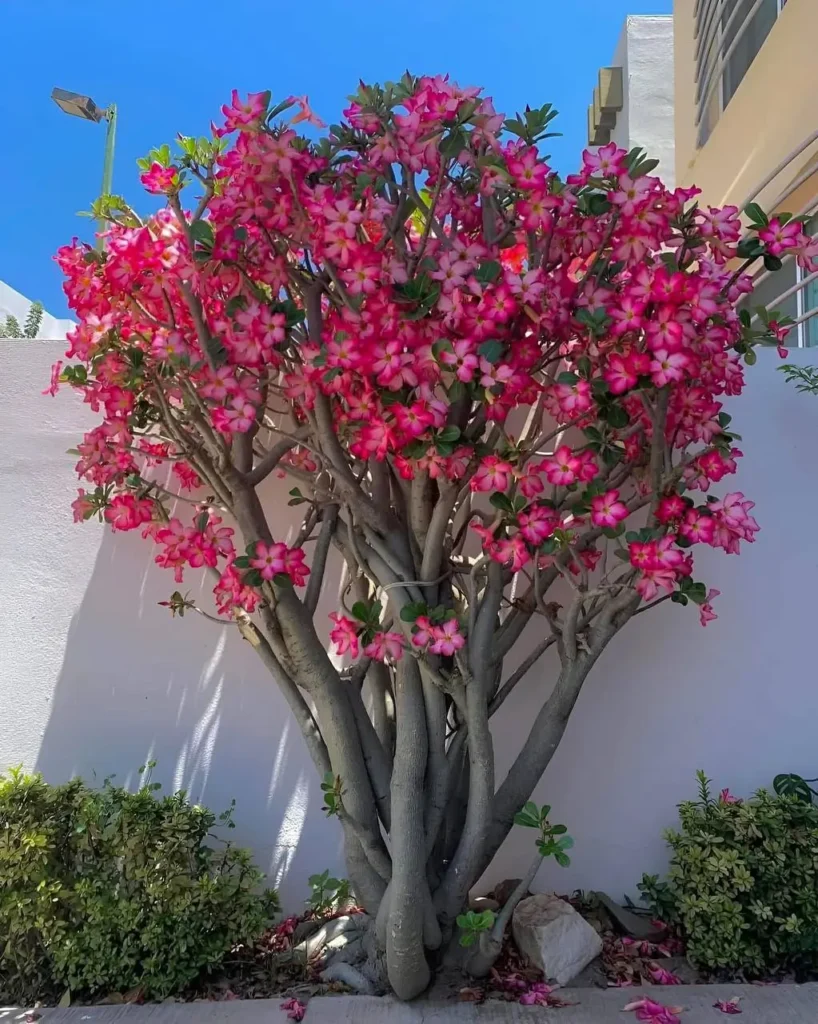
Utilize a unique plant, such as a Desert Rose (Adenium), with a sculptural form and vibrant pink flowers, to create a bold statement, even in a simple setting.
5/32. Cultivate a Wildflower Meadow Aesthetic
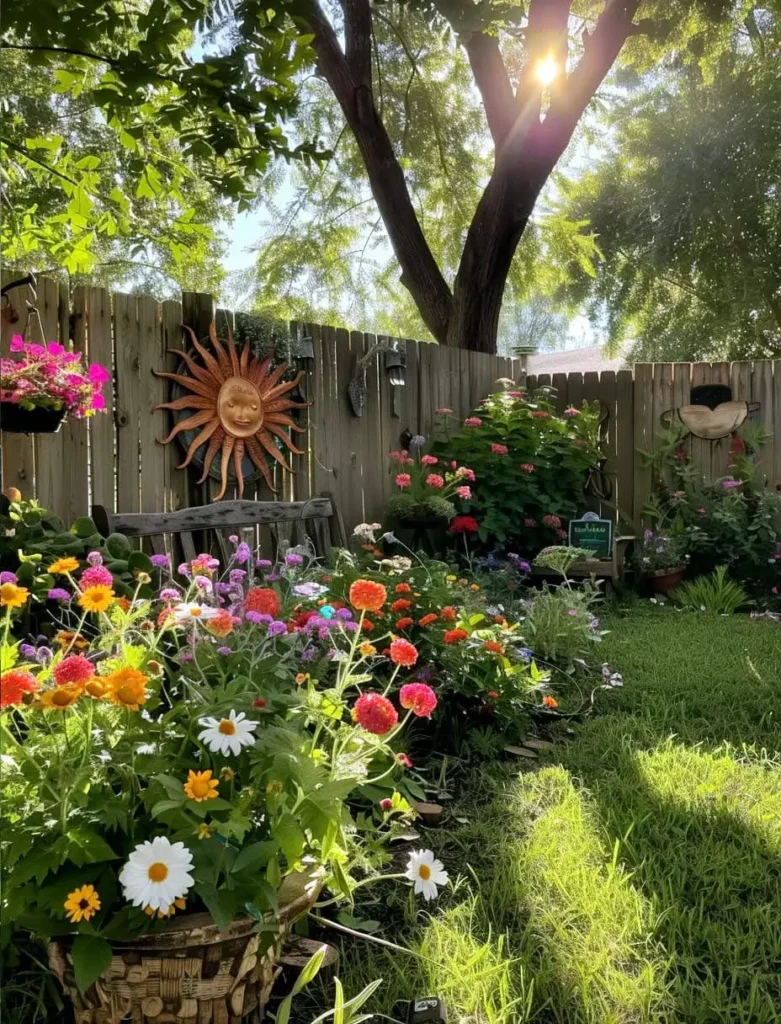
Embrace a natural, low-maintenance look with a mix of wildflowers. The diverse colors and forms create a lively atmosphere and attract pollinators.
6/32. Create a Winding Garden Path
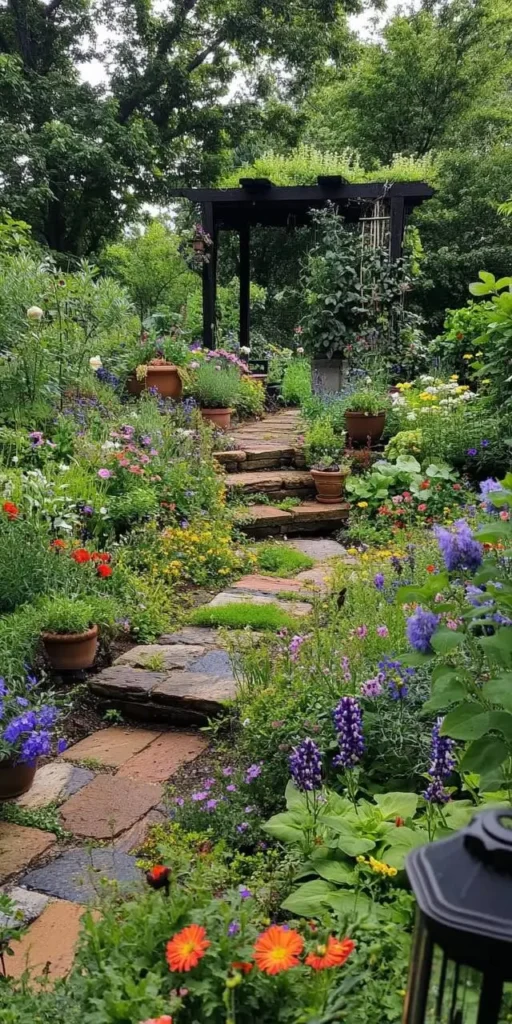
Stone pathways provide structure and invite exploration. Uneven stones, surrounded by a profusion of flowers, lead the eye through the garden, encouraging discovery.
7/32. Build a Tiered Raised Bed Display
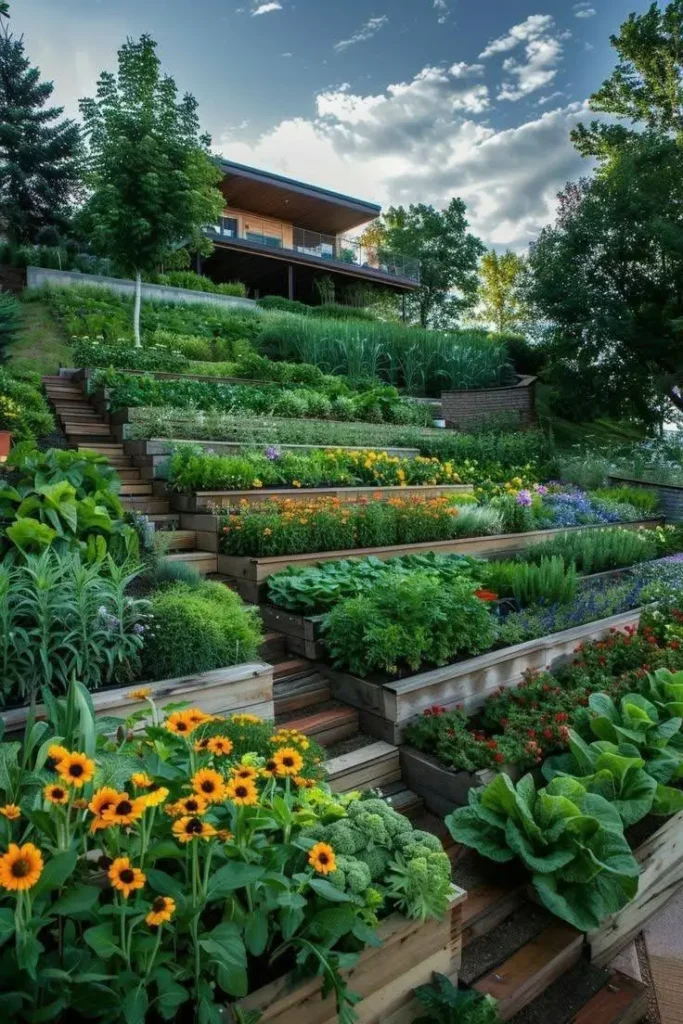
Maximize space and create visual drama with a series of raised garden beds. This multi-level design accommodates a variety of plants, creating a stunning cascade of color.
8/32. Line a Fence with Cheerful Blooms
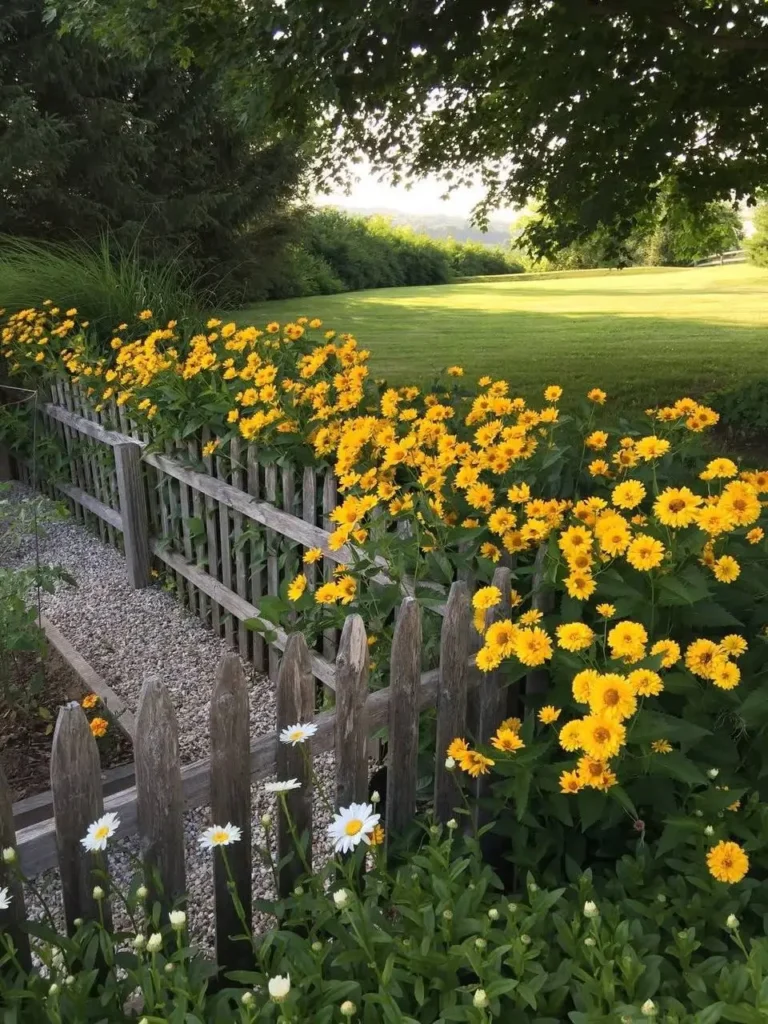
Soften the hard lines of a fence with a border of vibrant flowers, like cheerful yellow Heliopsis or daisies. Even boundary lines can become beautiful garden features.
9/32. Elevate Blooms with a Raised Garden Bed

Raised beds offer excellent drainage and make gardening more accessible. Fill them with a riot of color and a variety of flowers for an eye-catching and abundant display.
10/32. Create Contrast with Bold Color Blocks
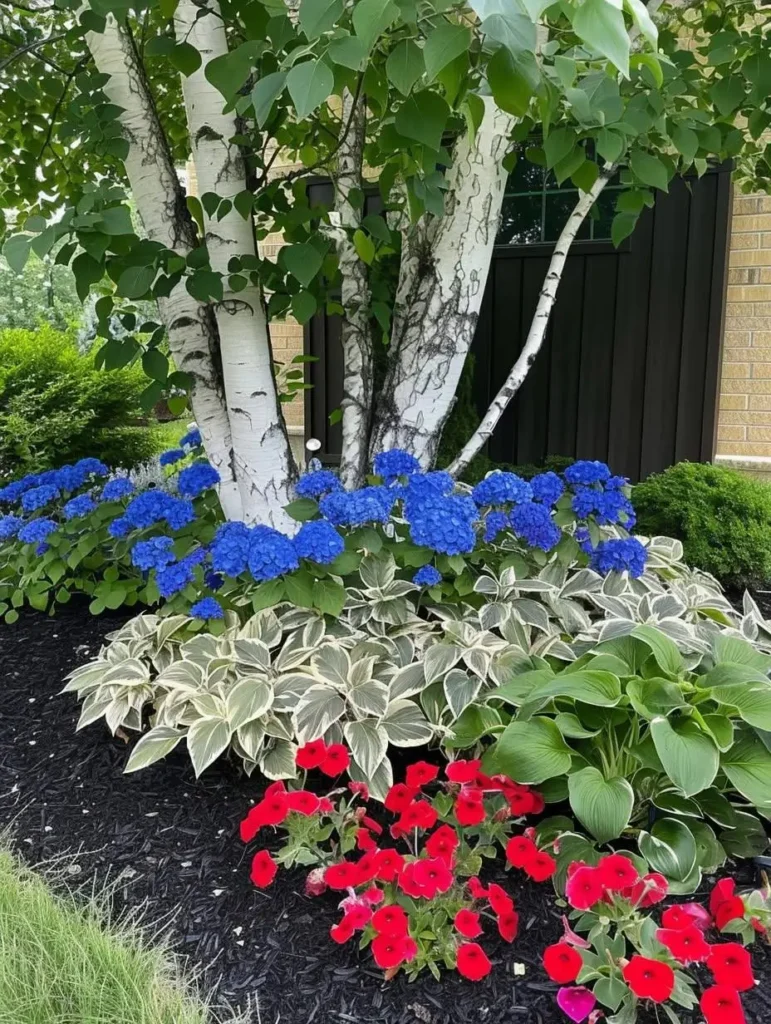
Plant flowers in distinct color blocks for strong visual impact. Combine vivid blue hydrangeas, red petunias, and variegated hostas for a modern aesthetic.
11/32. Establish a Vibrant Border Garden

A border garden filled with colorful flowers softens straight lines and brings energy to edges. Mix colors and heights for a dynamic display along fences or walkways.
12/32. Employ Repeat Planting for Rhythm

Create visual rhythm and order by planting the same species, like white flowering shrubs, in a row. This offers a calming contrast to more free-form garden areas.
13/32. Incorporate a Water Feature for Tranquility
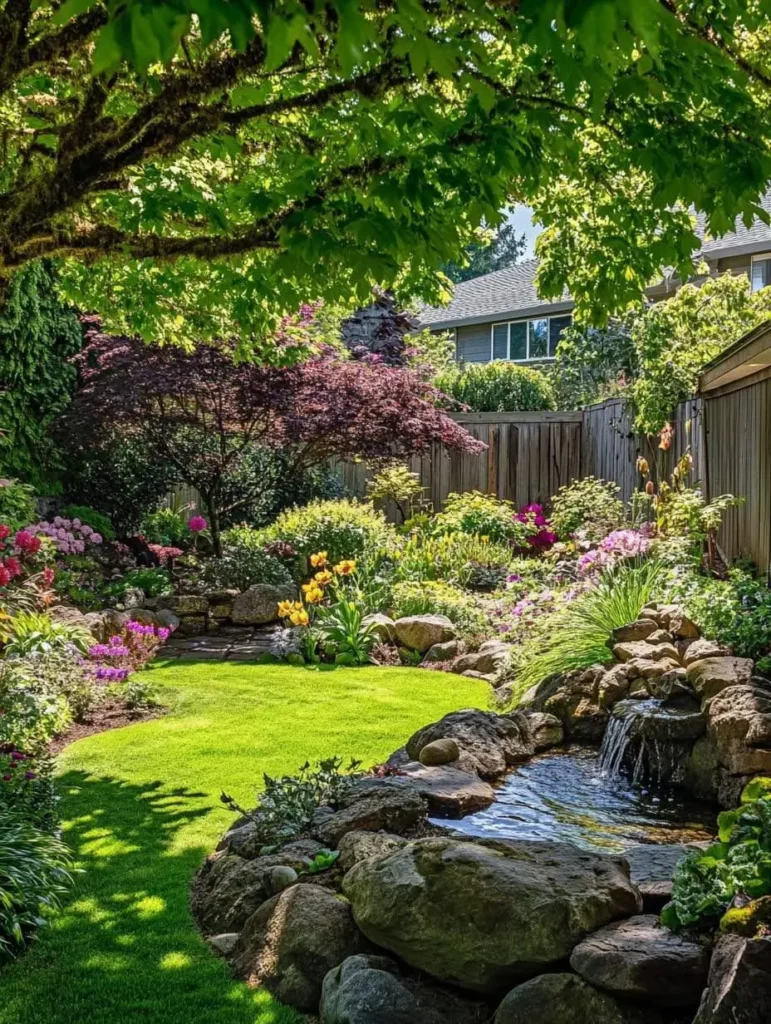
The gentle sound of flowing water adds a soothing element. A small waterfall and pond, surrounded by rocks and lush plantings, create a serene oasis.
14/32. Train Climbing Vines for Vertical Interest

Utilize vertical space with flowering vines, such as colorful Clematis, on a trellis. This adds height and creates a vibrant, living wall.
15/32. Construct a Corner Garden with Tiered Planters
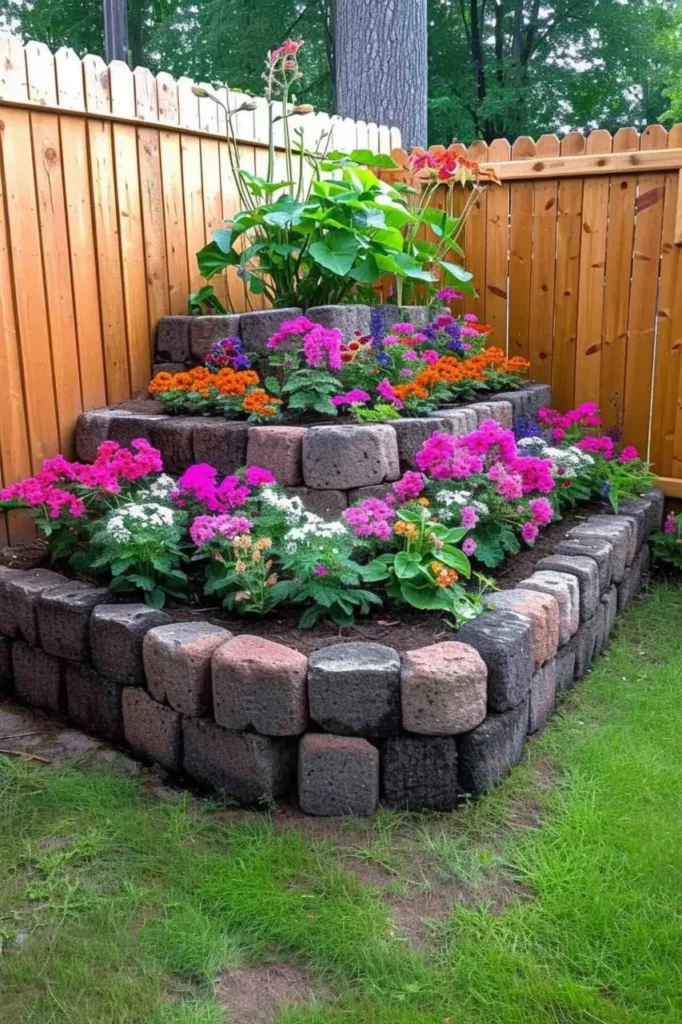
Maximize a corner space with a multi-level planter. This design adds dimension and allows for a variety of flowers to be displayed at different heights.
16/32. Design a Foundation Planting with Curb Appeal
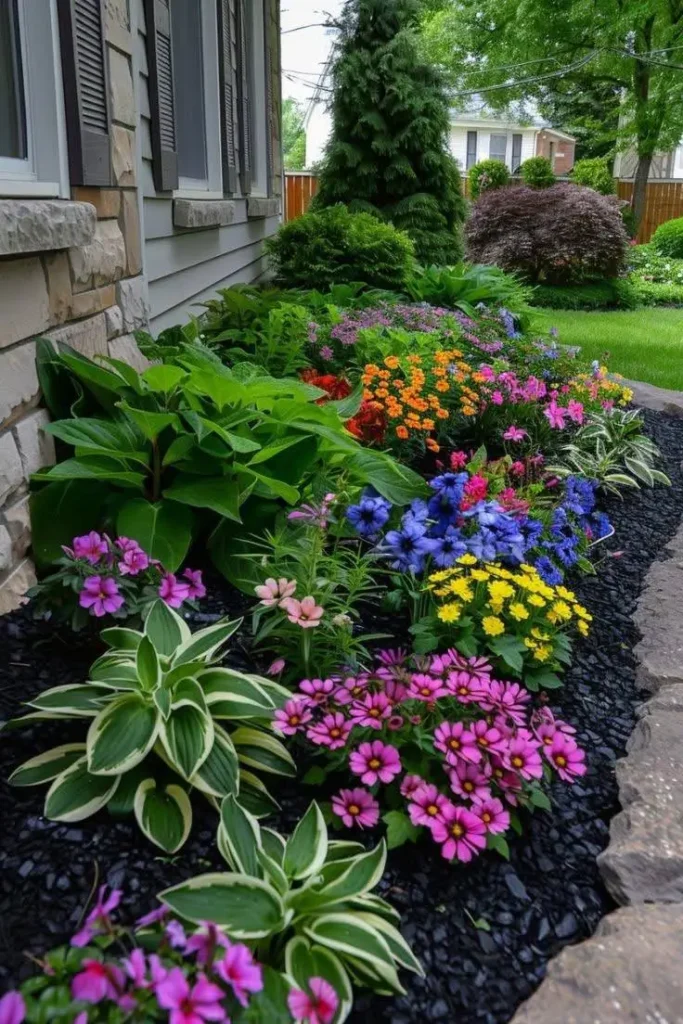
Enhance your home’s exterior with a carefully planned flower garden along the foundation. A mix of colors, heights, and textures creates a welcoming approach.
17/32. Create a Flower-Draped Pergola

Transform a pergola into a breathtaking floral display by training climbing roses and other flowering vines. Add hanging baskets for shade, beauty, and a romantic atmosphere.
18/32. Frame a Seating Area with a Floral Arch
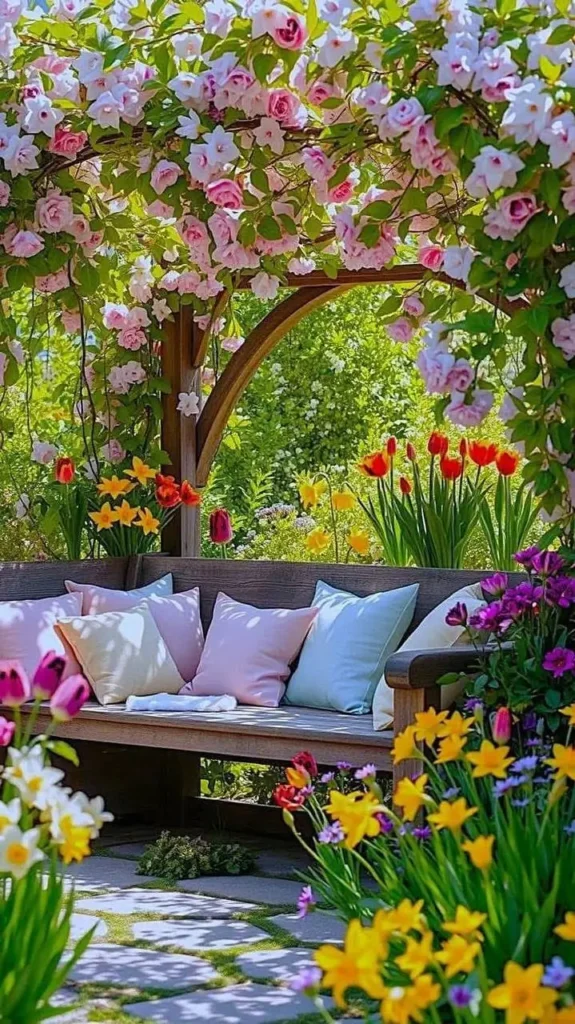
Create a magical entrance to a garden seating area with an arch covered in blooming climbers, like pale pink roses. This invites relaxation and enjoyment.
19/32. Define Edges with Colorful Flower Rows
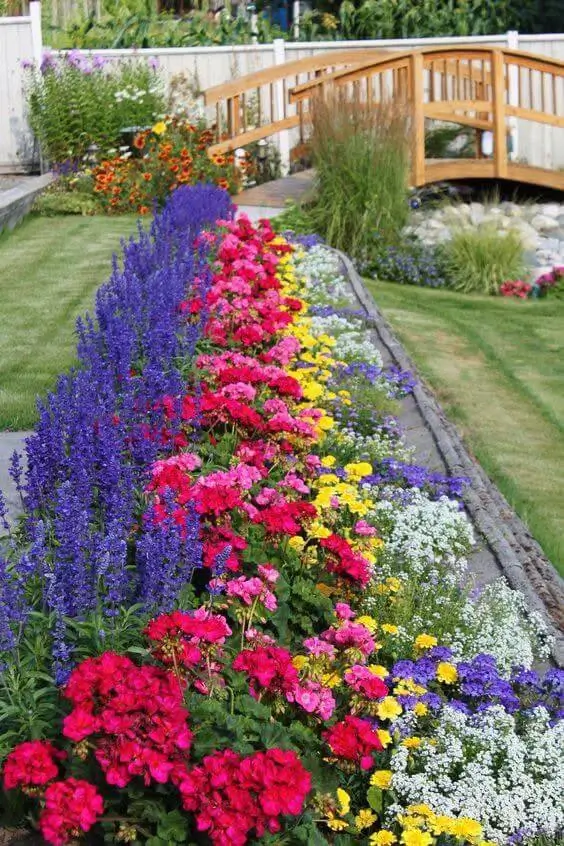
Use rows of flowers in contrasting colors to create a visually striking border. This is ideal for outlining walkways or adding formality and vibrant color.
20/32. Build a Tiered Water Feature with Flowers
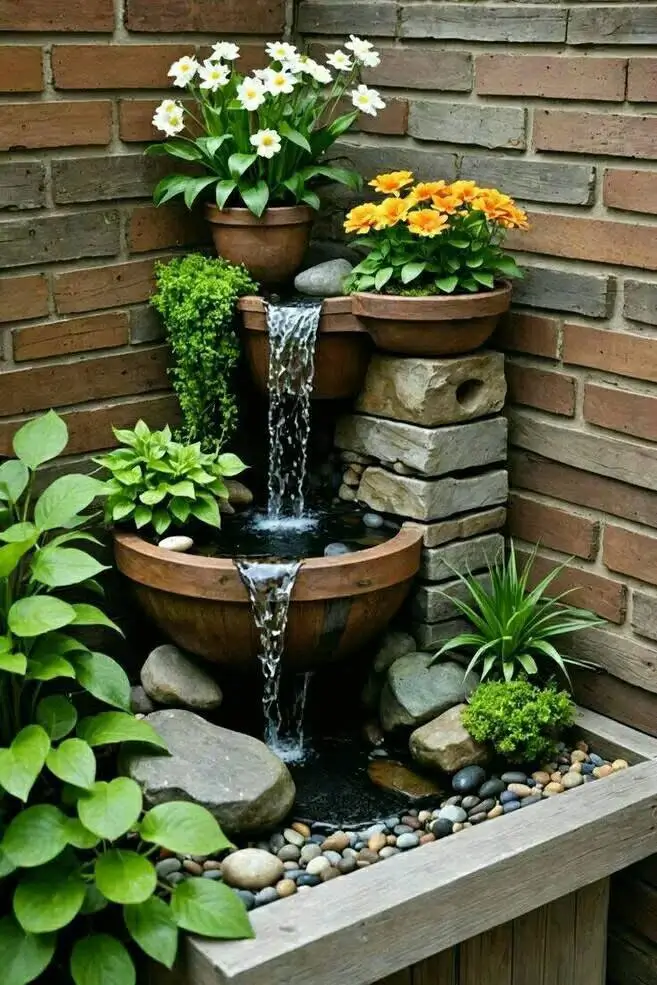
Combine the tranquility of water with floral beauty. This multi-level design incorporates cascading water and strategically placed potted plants for a captivating focal point.
21/32. Develop a Cottage Garden with Vintage Charm
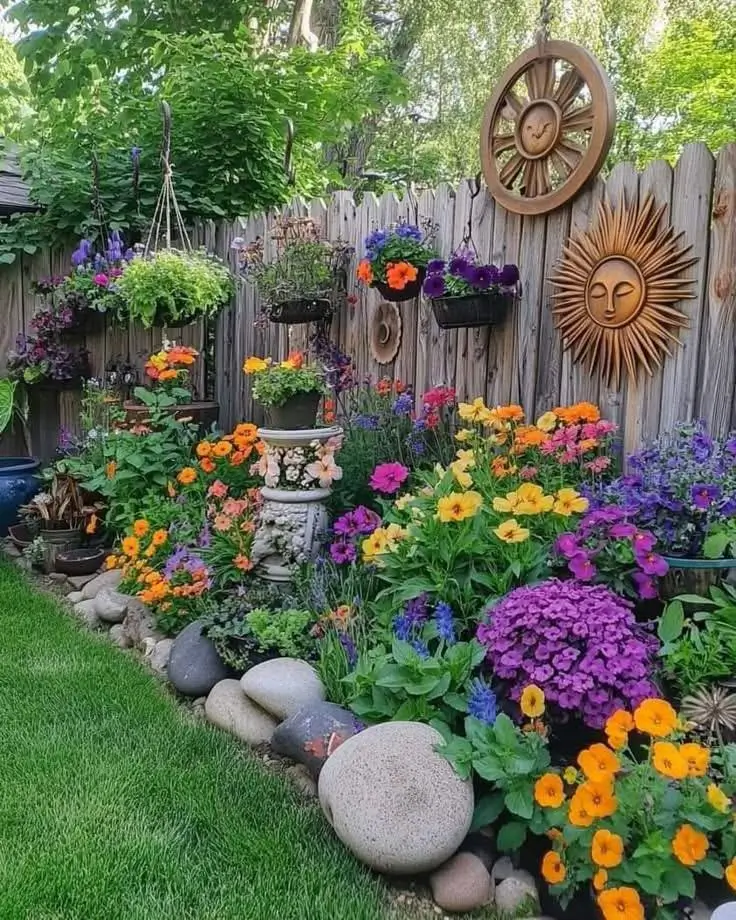
Embrace a charming, informal style with a mix of flowers and textures. Incorporate vintage elements for a nostalgic, whimsical atmosphere.
22/32. Stunning Dahlia Display
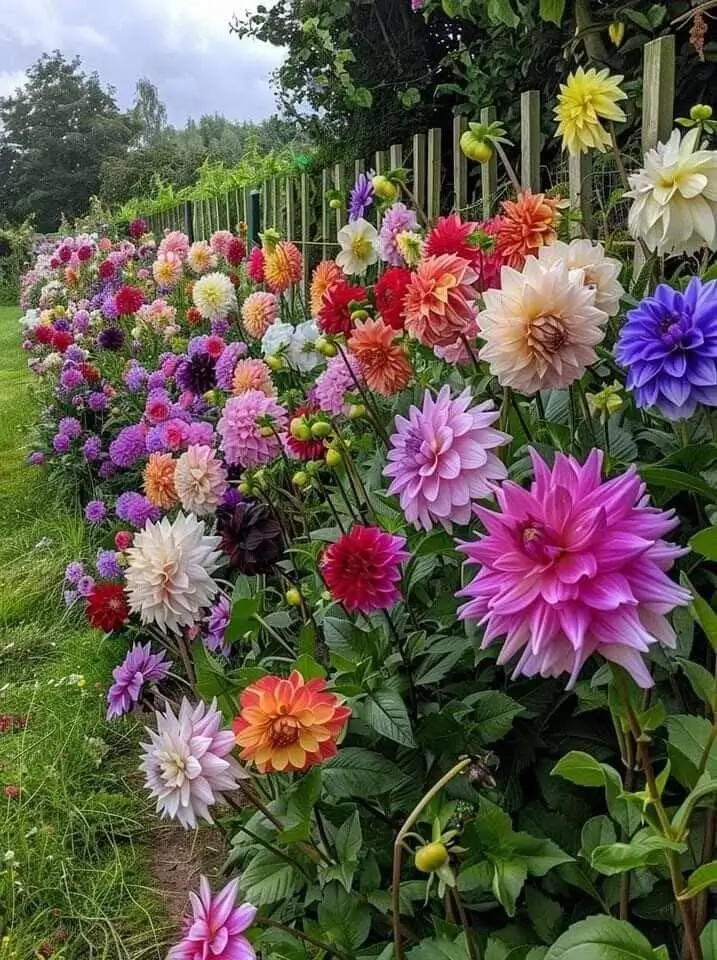
Dedicate a section of your garden to the diverse beauty of dahlias. Their incredible range of colors, sizes, and forms creates a spectacular summer display.
23/32. Transform a Narrow Side Yard with Flowers
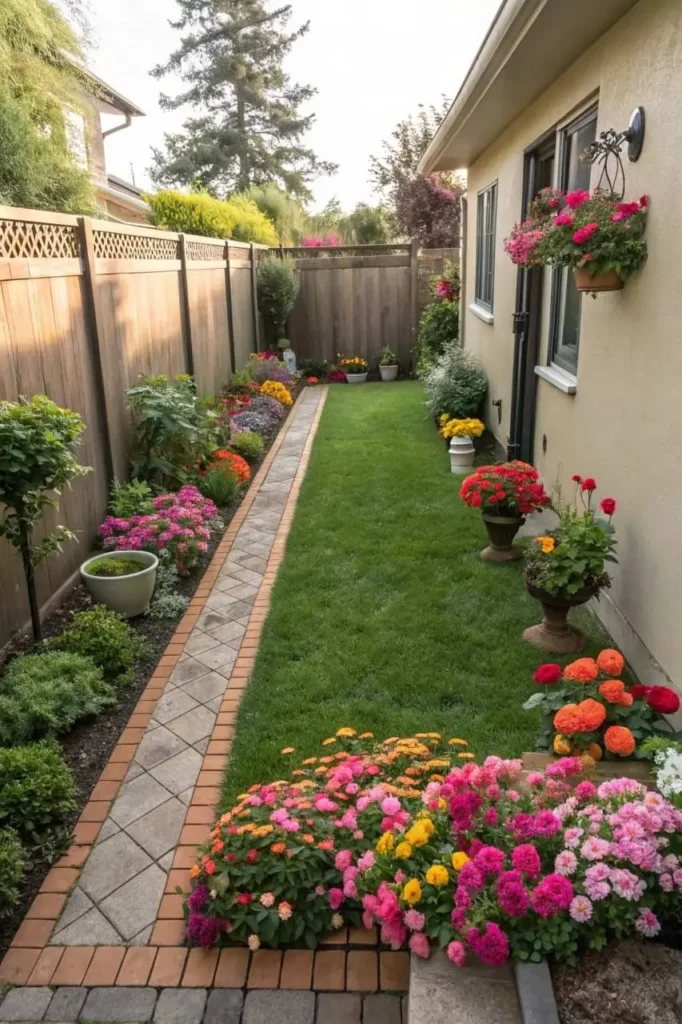
Maximize limited space by creating a flower-filled oasis along a narrow walkway. Colorful blooms and planters add beauty and interest to often-overlooked areas.
24/32. Grow Clematis in Containers for Vertical Accent

Showcase the beauty of Clematis ( Clematis ‘Jackmanii’ or similar varieties) by training it to climb within a container. This is perfect for patios, decks, or balconies.
25/32. Design a Monochromatic Purple Paradise
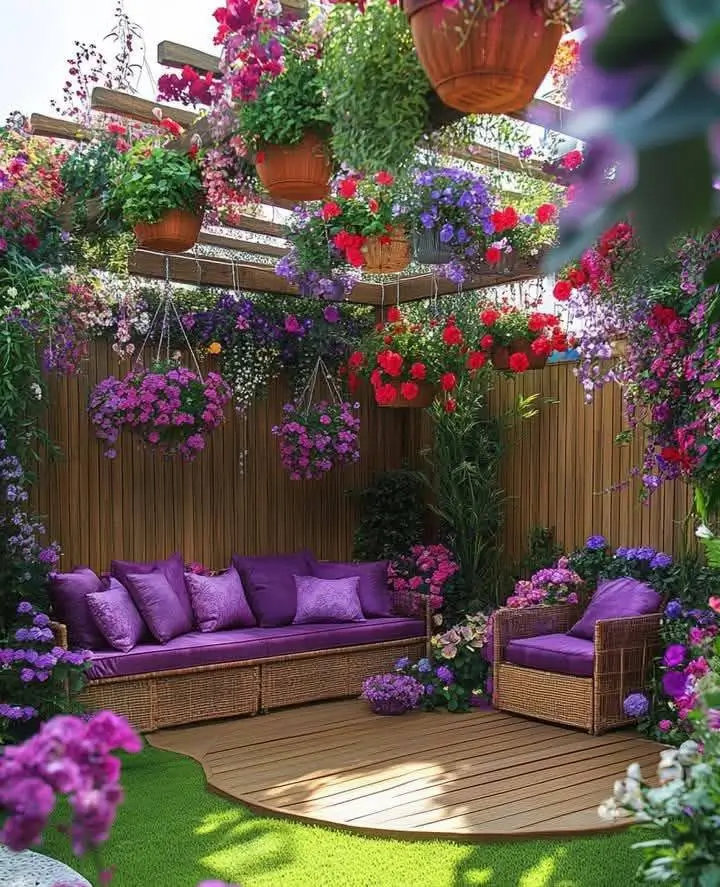
Create a calming and sophisticated garden space using various shades of purple. This design utilizes different purple-toned flowers for a visually stunning and harmonious atmosphere.
26/32. Combine Ground Cover and Hanging Baskets
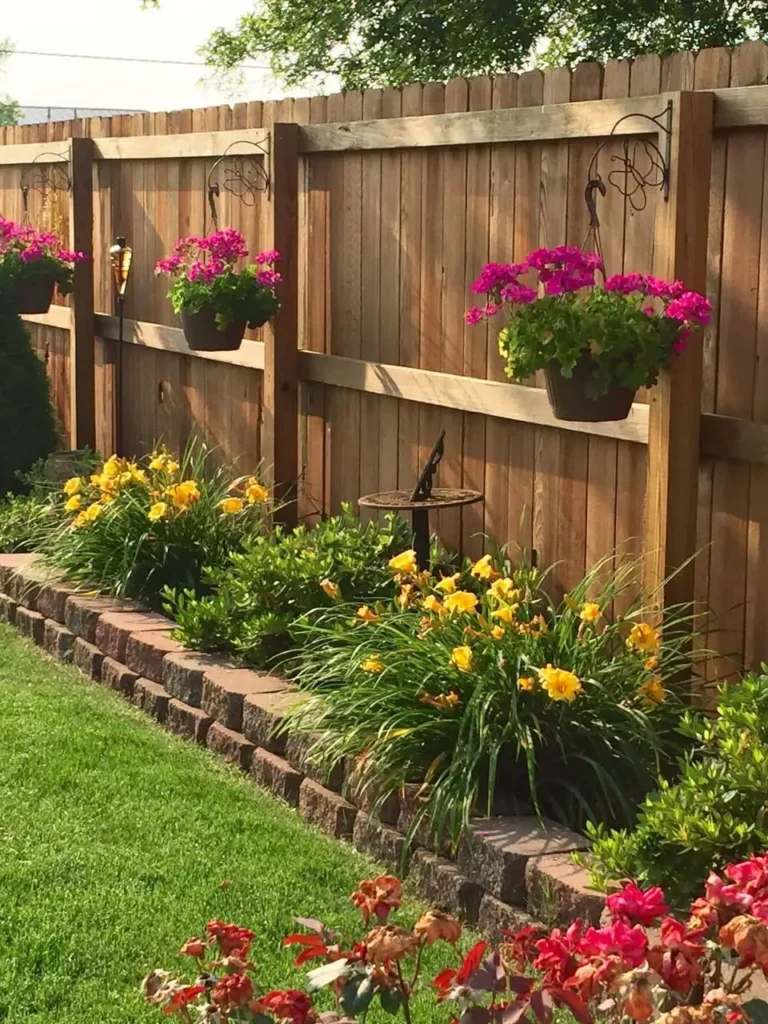
Create visual interest at multiple levels by pairing vibrant ground cover flowers, like yellow daylilies, with complementary hanging baskets of, for example, pink petunias.
27/32. Decorate a Garden Shed with Flowers
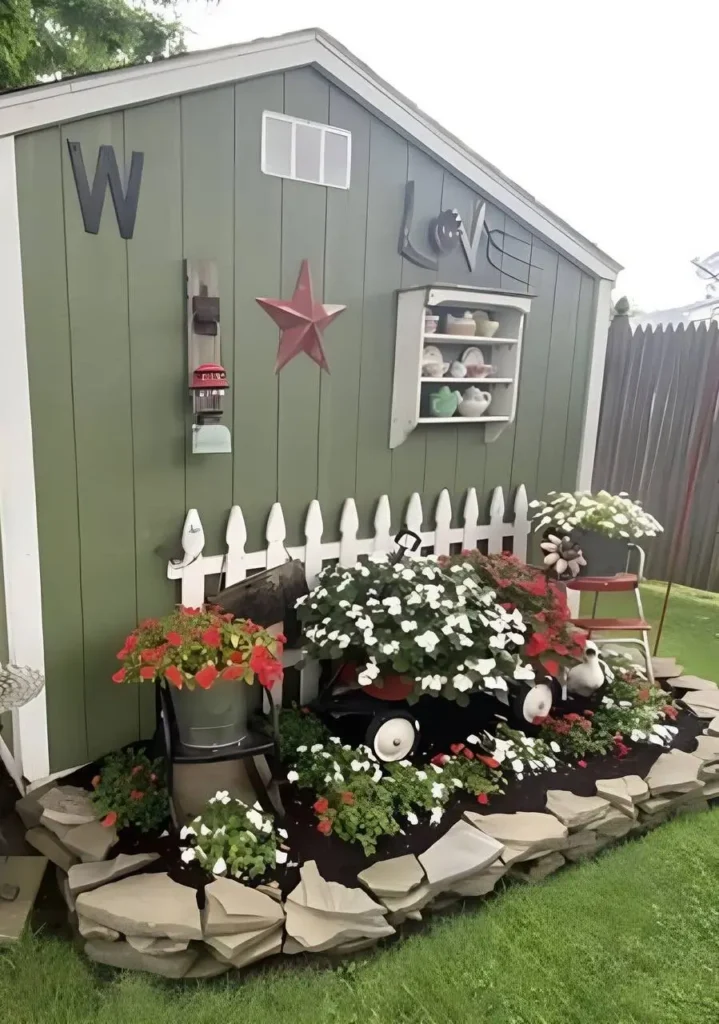
Extend your garden’s beauty to structures by incorporating flowers around a shed. Cheerful impatiens in containers soften the building’s appearance.
28/32. Create a Lush, Layered Border Planting
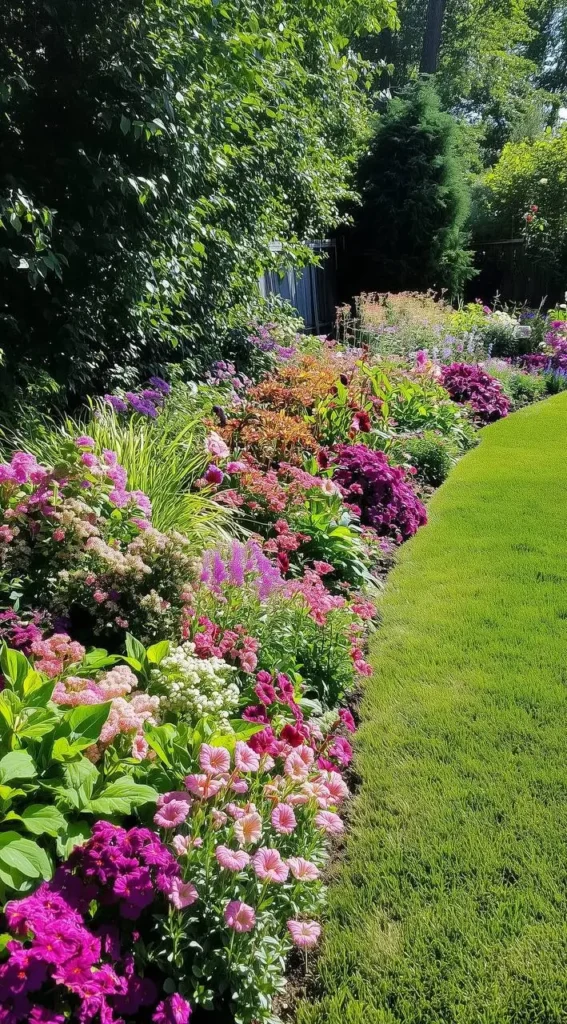
Design a deep border garden with a variety of plants, showcasing different heights, textures, and shades of pink, purple, and green. This provides a continuous display.
29/32. Install a Charming White Picket Fence Garden
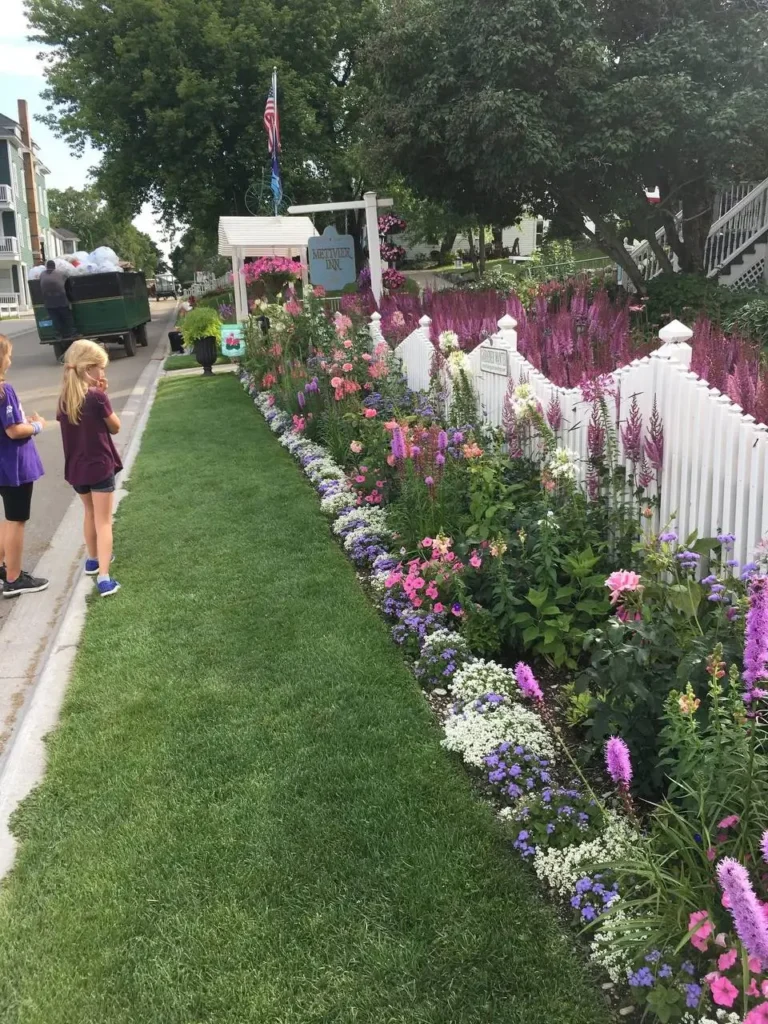
A white picket fence provides a classic backdrop for a colorful array of flowers. The blooms spilling over the fence create a welcoming and picturesque scene.
30/32. Pair a Flowering Tree with Underplantings
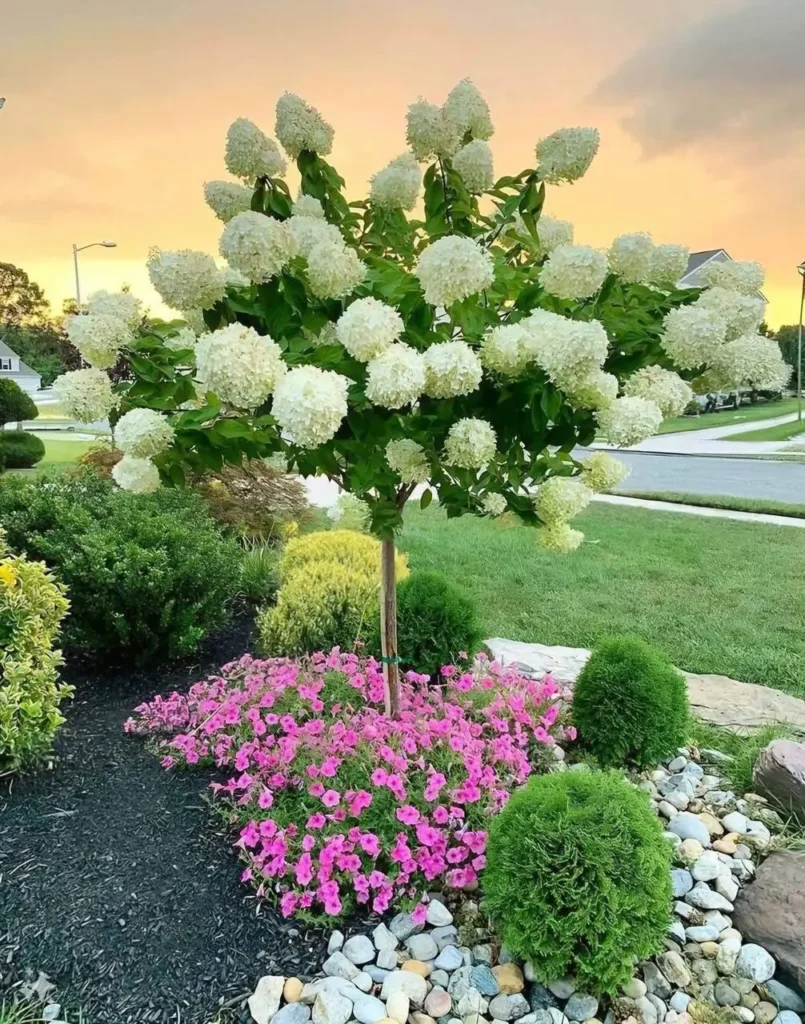
Create a miniature garden vignette by planting colorful flowers, like pink petunias, around the base of a flowering tree, such as a Limelight Hydrangea.
31/32. Curate a Collector’s Garden of Diverse Blooms
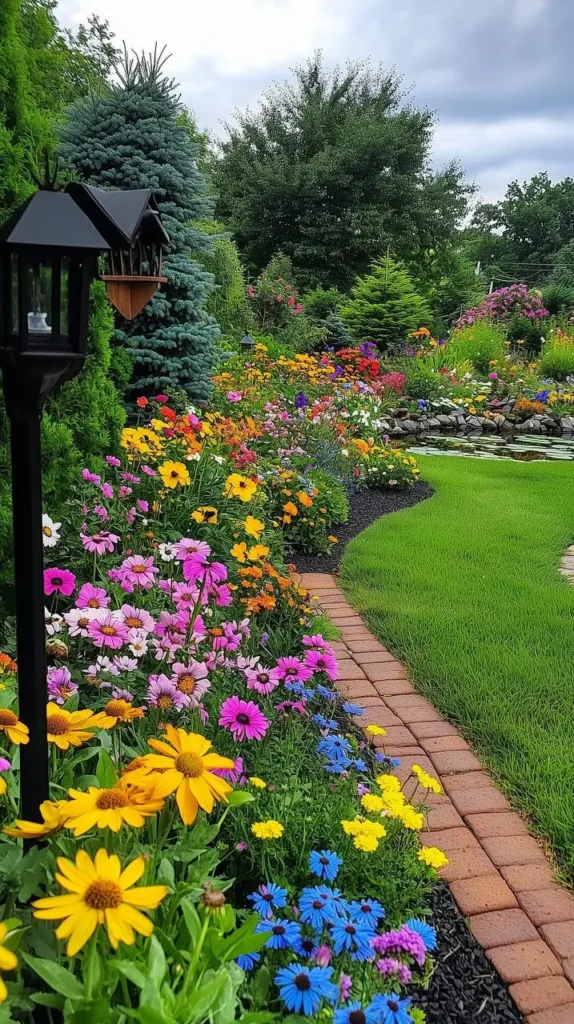
Showcase a wide variety of flowering plants, including zinnias, petunias, black-eyed Susans, and coneflowers, in a single space. This celebrates floral diversity.
32/32. Design a Flowing, Curvilinear Flower Bed
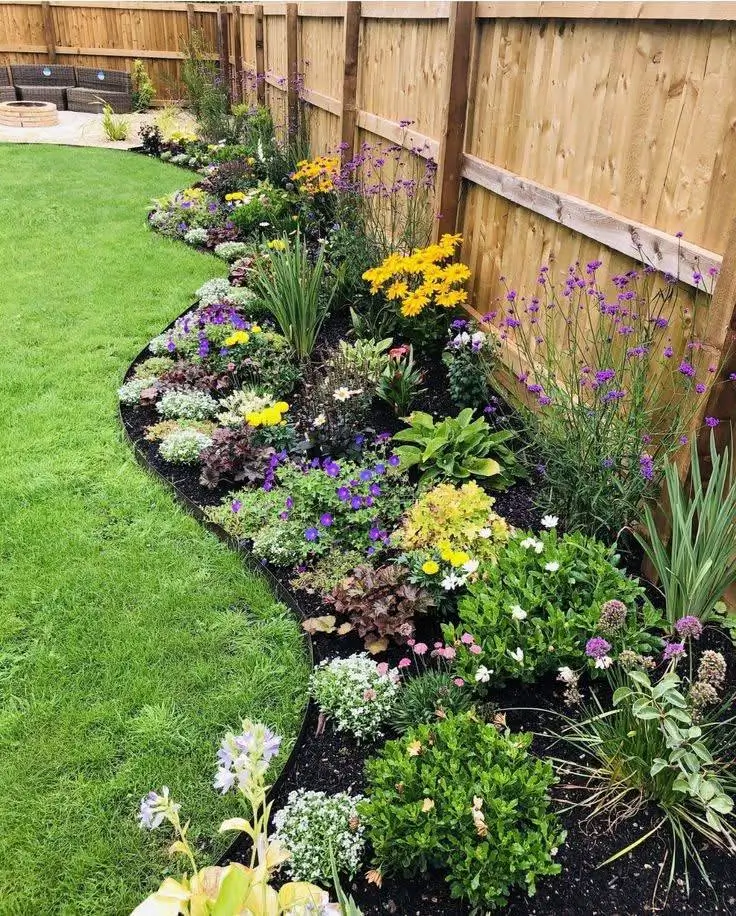
Soften the straight lines of a fence or lawn with a flower bed featuring gentle curves. Incorporate plants like Boxwood ( Buxus ), Alyssum ( Lobularia maritima ), and Vervain ( Verbena ) for added interest and texture. This design adds movement and an organic feel.
Essential Flower Garden Care Tips
Even the most beautifully designed flower garden needs regular care to thrive.
- Soil Preparation: Healthy soil is the foundation of a healthy garden. Amend your soil with compost or other organic matter to improve drainage and fertility. For heavy clay soil, incorporate coarse sand and compost. For sandy soil, add compost and peat moss.
- Watering Wisely: Water deeply and less frequently, rather than shallowly and often. Water early in the morning to reduce evaporation and allow foliage to dry. Use a soaker hose or drip irrigation to deliver water directly to the roots.
- Fertilizing for Flourishing Blooms: Different plants have different fertilizer needs. Use a balanced fertilizer or one formulated for flowering plants. Consider a slow-release fertilizer for sustained feeding, or a liquid fertilizer diluted to half-strength every few weeks.
- Deadheading and Pruning: Regularly remove spent blooms (deadheading) to encourage more flowering. Prune plants as needed to maintain shape and size. For some, like roses, pruning is about shaping and promoting healthy growth.
- Pest and Disease Control: Inspect your plants regularly. Address problems promptly. Introduce beneficial insects, like ladybugs. Companion planting can also deter pests – marigolds near tomatoes can repel nematodes.
Conclusion:
Creating a beautiful flower garden is a journey of learning, experimenting, and nurturing. Embrace the challenges, celebrate the successes, and enjoy the immense satisfaction of watching your garden flourish. Express your unique style and create a space that brings you joy. Share your flower garden photos with us using #MyBeautifulGarden – we’d love to see your creations!
FAQs about Beautiful Flower Gardens
What’s the best way to start a flower garden if I’m a complete beginner?
Start small and simple! Choose a sunny spot, prepare the soil well by adding compost, and select a few easy-to-grow flowers that are suited to your climate. Don’t be afraid to ask for advice at your local garden center.
How do I keep my flower garden blooming all season long?
The key is succession planting. Choose plants with different bloom times – spring bulbs, summer perennials, and fall-blooming annuals – to ensure continuous color. Deadheading spent flowers also encourages more blooms.
How can I attract more butterflies and bees to my flower garden?
Plant a variety of flowers that are known to attract pollinators, such as coneflowers, bee balm, lavender, and butterfly bush. Provide a shallow dish of water for them to drink from, and avoid using pesticides.
YOU MIGHT ALSO LIKE:

